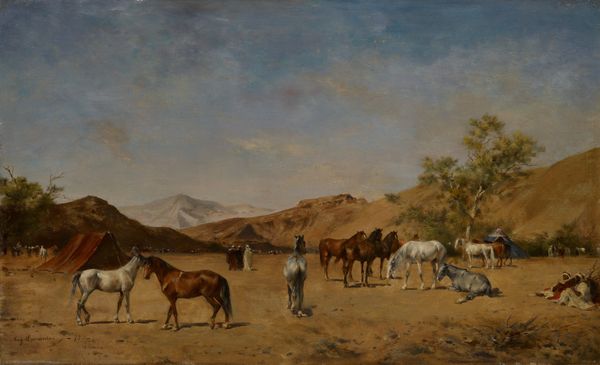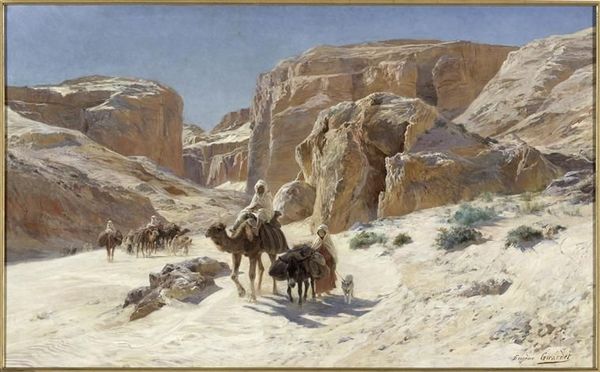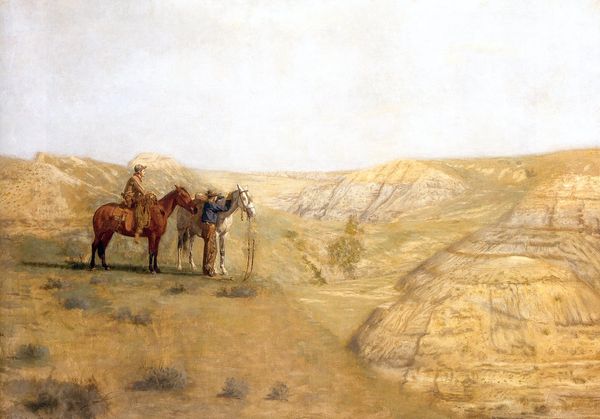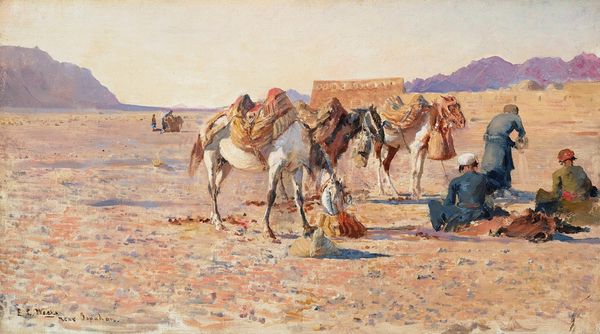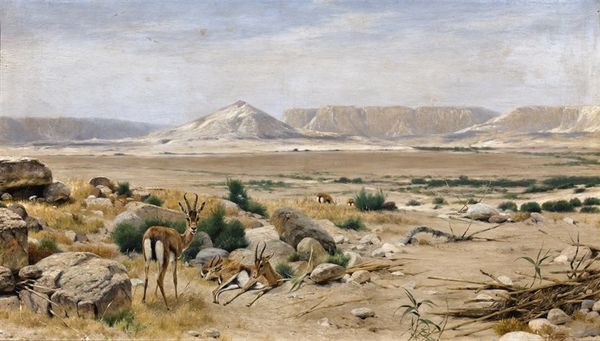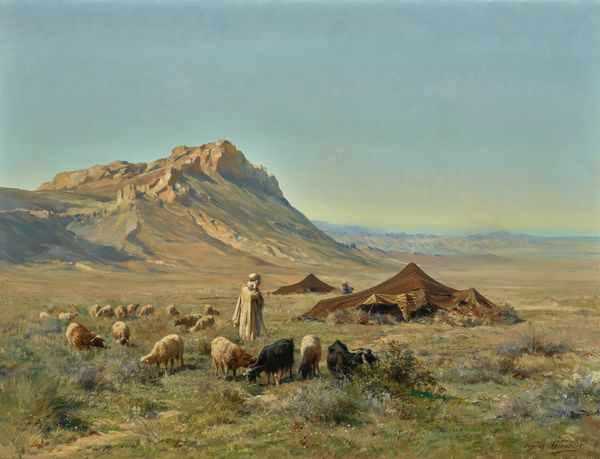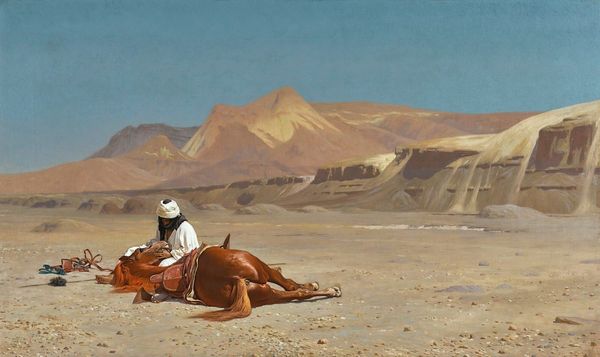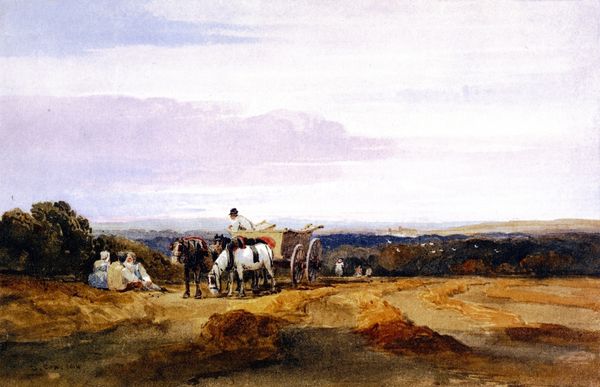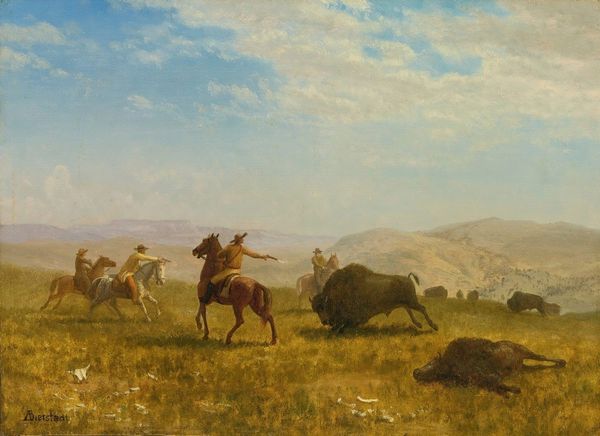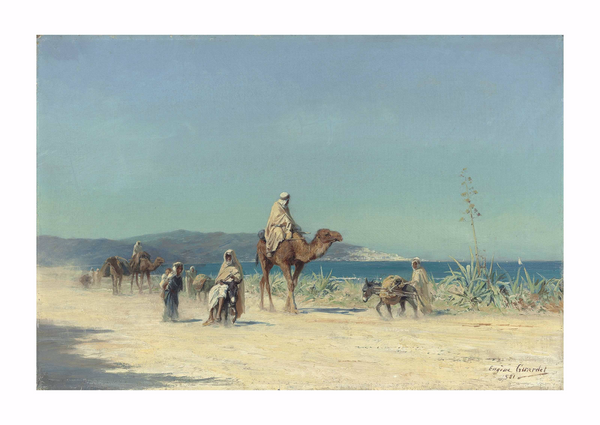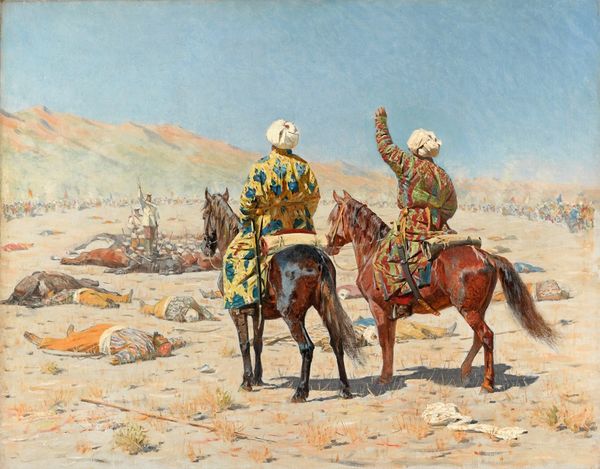
plein-air, oil-paint
#
plein-air
#
oil-paint
#
landscape
#
oil painting
#
orientalism
#
genre-painting
#
history-painting
#
realism
Copyright: Public domain
Curator: Here we have Eugène Girardet's "Figures in the Desert at Eddis," rendered in oil paint, a piece deeply embedded in the Orientalist movement. Editor: It feels like a stage set almost, doesn't it? The way the figures are arranged with the monumental backdrop… And look at the dry, cracked earth, you can almost feel the grit. Curator: Yes, the composition does lend a theatrical air. Girardet, along with many of his contemporaries, found a receptive audience eager for depictions of the "exotic" East, and paintings like this reinforced certain cultural power dynamics of the time. Consider the popularity of genre and history paintings at the Salons during the 19th century; images such as this fueled Europe's fascination with colonial endeavors. Editor: I am really taken with the tactile qualities of those mud walls though; how the painter rendered the layering of the rough materials... It makes me wonder about the lives and labor involved in building these structures. It speaks to the contrast in how Girardet likely came to experience that built environment—travelling for shorter periods, quickly painting and leaving—versus the community and life it embodies and physically facilitates day-to-day. Curator: Indeed, that tension is palpable. On one hand, Girardet sought to accurately depict what he observed—or what he wanted his European audience to believe he observed, at least. The figures, however, often appear more like props, serving to enhance the scene’s perceived authenticity, almost minimizing their role to one of merely inhabiting a landscape the painting sells as raw and majestic. Editor: Precisely! But if you look closely, the materiality resists that reading, pushing beyond exoticization and historical flattening. I keep being drawn back to how the oil paint almost perfectly simulates the heavy texture of plaster or adobe. There’s a strange poetry to that. Curator: And, of course, it's crucial to remember that these portrayals were rarely neutral. Artists played a role, consciously or not, in perpetuating stereotypes and reinforcing the imperial gaze. Even depictions that seem benign contributed to a larger framework. Editor: It gives me pause, reflecting on how easily these scenes were consumed then, divorced from the realities of those depicted within. Still, I admire the deceptive quality of the materiality here, an unsettling element that transcends and even threatens the artifice that’s taking place. Curator: A point well taken. By acknowledging its historical context, "Figures in the Desert at Eddis" offers us a window not just into a landscape, but into the complex relationships between the colonizer and the colonized. Editor: An ongoing lesson in seeing, representation, and how closely linked artmaking is to its social implications.
Comments
No comments
Be the first to comment and join the conversation on the ultimate creative platform.

